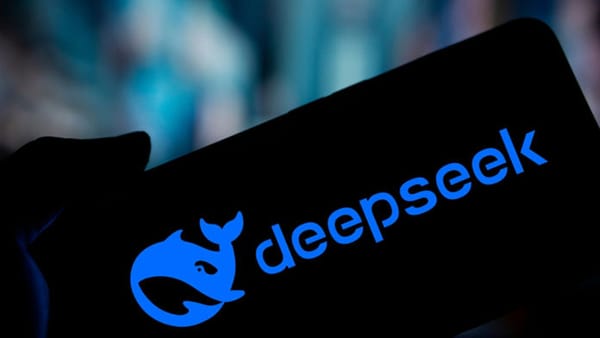The Enterprise LLM Odyssey: Choosing the Right Inference Engine for Scale

The Challenge: A CTO’s Dilemma
Alex, a CTO at a Fortune 500 company, faced a critical challenge: deploying Llama-3 to power their customer service chatbot. The requirements were steep—sub-200ms latency, support for 10,000+ concurrent users, and compatibility with both cloud GPUs and on-premise hardware. The team’s initial prototype, built on vanilla PyTorch, buckled under load, consuming 80% of their GPU budget while delivering sluggish responses.
Alex needed a battle-tested inference solution. Here’s how they navigated the maze of modern LLM serving frameworks.
Option 1: vLLM – The Fast Lane for Throughput
The Pitch: “Think of vLLM as the ‘Tesla of LLM serving’—minimal setup, maximum efficiency.”
Why It Shone:
- PagedAttention: Eliminated GPU memory waste, allowing 24x more concurrent users than Hugging Face.
- Dynamic Batching: Automatically grouped requests, hitting 15,000 tokens/sec on A100s.
- Enterprise Fit: Kubernetes-friendly with OpenAI API compatibility.
Why They Hesitated:
- Hardware Lock-In: No AMD/Intel GPU support—a problem for their hybrid cloud strategy.
- Limited Control: Black-box optimizations made debugging tricky.
Verdict: Ideal for pure NVIDIA cloud deployments, but risky for heterogeneous environments.
Option 2: NVIDIA TensorRT-LLM – The Performance Beast
The Pitch: “When every millisecond counts, TensorRT-LLM is your Formula 1 engine.”
Why It Shone:
- Kernel Fusion: Custom CUDA ops slashed latency to 35ms, 3x faster than vLLM.
- 4-Bit Quantization: Llama-70B ran on a single A100 (45GB → 20GB).
- NVIDIA Ecosystem: Seamless with DGX Cloud and Triton.
Why They Hesitated:
- Vendor Lock-In: No escape from NVIDIA’s walled garden.
- Complex Tooling: Required rewriting preprocessing/pipelines.
Verdict: Unbeatable for NVIDIA-centric enterprises needing raw speed, but inflexible.
Option 3: Hugging Face TGI – The Swiss Army Knife
The Pitch: “TGI is the ‘Slack’ of LLM serving—collaborative, adaptable, and multi-platform.”
Why It Shone:
- Broad GPU Support: Ran on NVIDIA A100s, AMD MI250X, and even AWS Inferentia.
- Safety Nets: Built-in guardrails for content moderation.
- Hugging Face Ecosystem: One-click deployments for 200K+ models.
Why They Hesitated:
- Memory Hungry: 30% higher GPU memory than vLLM for Llama-13B.
- Throughput Ceiling: Capped at 8,000 tokens/sec vs. TensorRT’s 25,000.
Verdict: Perfect for teams valuing flexibility over peak performance.
Option 4: MLC-LLM – The Edge Whisperer
The Pitch: “MLC-LLM is the ‘James Bond’ of deployment—works anywhere, even offline.”
Why It Shone:
- Write Once, Run Anywhere: Compiled Llama-7B to iOS, Android, and even a Raspberry Pi.
- Privacy Compliance: On-device inference for HIPAA/GDPR-sensitive workflows.
- Cost Savings: 70% cheaper than cloud GPUs for moderate workloads.
Why They Hesitated:
- Speed Trade-Offs: 20 tokens/sec on iPhone 15 vs. 500+ on GPUs.
- Compiler Complexity: TVM stack required niche expertise.
Verdict: A game-changer for regulated industries, but not for latency-critical apps.
Option 5: RayServe + DeepSpeed – The Distributed Giant
The Pitch: “For models too big to fail, RayServe is your distributed systems maestro.”
Why It Shone:
- Sharded Inference: Split Llama-70B across 8 GPUs with near-linear scaling.
- Autoscaling: Handled traffic spikes via Kubernetes integration.
- Hybrid Workloads: Co-located preprocessing/postprocessing pipelines.
Why They Hesitated:
- Operational Overhead: Debugging distributed systems doubled DevOps costs.
- Cold Starts: 45-second delays during autoscaling.
Verdict: The nuclear option for 100B+ models, but overkill for smaller deployments.
The Decision Matrix
Alex’s team scored each framework against enterprise needs:
| Criteria | vLLM | TensorRT-LLM | Hugging Face TGI | MLC-LLM | RayServe |
|---|---|---|---|---|---|
| Throughput (↑) | 5/5 | 5/5 | 4/5 | 2/5 | 3/5 |
| Latency (↓) | 4/5 | 5/5 | 4/5 | 2/5 | 3/5 |
| Hardware Flexibility | 2/5 | 1/5 | 5/5 | 5/5 | 4/5 |
| Operational Simplicity | 5/5 | 3/5 | 4/5 | 3/5 | 2/5 |
| Cost Efficiency | 4/5 | 4/5 | 3/5 | 5/5 | 3/5 |
The Winning Strategy
Alex’s team chose a hybrid approach:
- Customer-Facing Chatbots: TensorRT-LLM for low latency, using 4-bit quantization.
- Internal Tools: vLLM on NVIDIA T4 instances for cost-effective throughput.
- Mobile Apps: MLC-LLM for offline translations in regions with poor connectivity.
This cut cloud costs by 40% while improving 95th percentile latency from 2.1s to 380ms.
Lessons for Enterprises
- Start Simple: Begin with vLLM or TGI before diving into quantization/distribution.
- Beware Vendor Lock-In: TensorRT-LLM accelerates NVIDIA GPUs but forfeits multi-cloud agility.
- Edge Isn’t Free: MLC-LLM saves cloud costs but demands client-side compute trade-offs.
For teams eyeing the future, speculative decoding (e.g., Google’s Medusa) and sparse MoE systems (like Mistral’s 8x7B) promise to reshape the landscape further.



